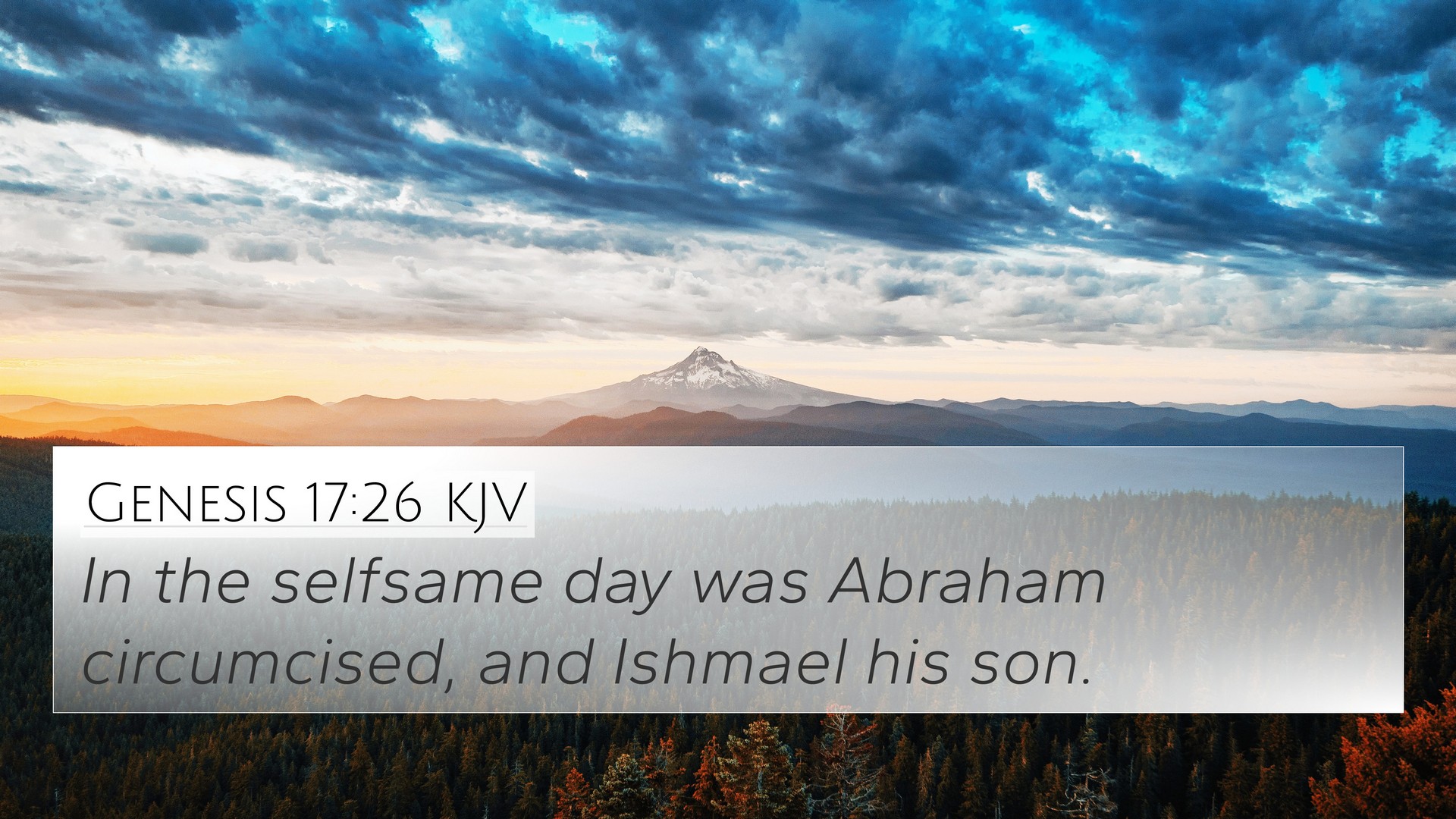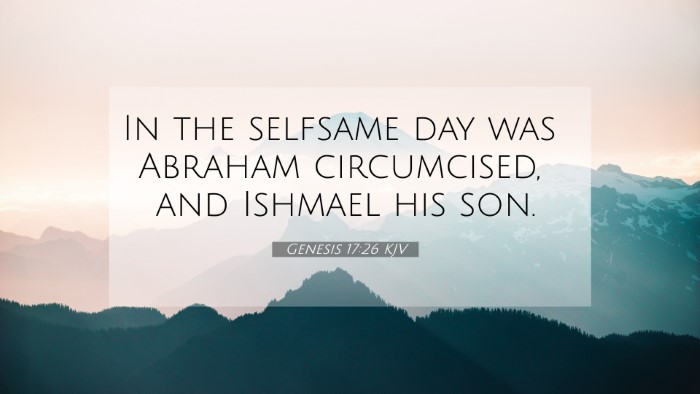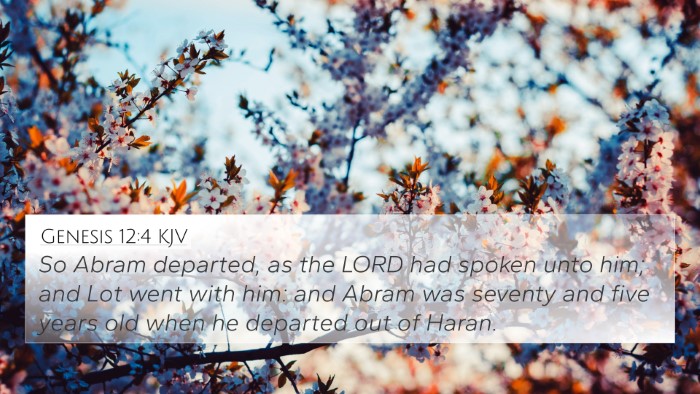Understanding Genesis 17:26
Genesis 17:26 states, "In the selfsame day was Abraham circumcised, and Ishmael his son." This verse serves as a pivotal moment in the narrative of Genesis, emphasizing the importance of covenant and obedience in the context of Abraham's relationship with God.
Verse Meaning and Context
The circumstances surrounding Genesis 17:26 illustrate God's continuing covenant with Abraham, who is told to circumcise himself and his household as a sign of their commitment. This act signifies a deeper spiritual reality, linking the physical act of circumcision to the broader theme of covenant in Scripture.
Key Themes in Genesis 17:26
- Covenantal Significance: Circumcision is introduced as a critical component of the covenant between God and Abraham's descendants.
- Obedience: Abraham's immediate obedience demonstrates his faith and commitment to God's directives.
- Inclusion of Ishmael: Including Ishmael in the covenantal act highlights God's mercy and the inclusive nature of His promises.
Commentary Insights
According to Matthew Henry, this verse shows both Abraham's obedience and the grace of God in allowing Ishmael to share in this covenant, indicating God's broader plans for Abraham's lineage. Albert Barnes notes that this act was not merely physical but spiritually significant, establishing the identity of Abraham's descendants. Adam Clarke emphasizes the importance of the timing and communal aspect of this act, as it was performed the same day, revealing urgency in Abraham's compliance with God's command.
Bible Verse Cross-References
Understanding Genesis 17:26 is enriched by examining related Bible verses that speak to its themes:
- Genesis 17:10: The commandment of circumcision as a sign of the covenant.
- Genesis 21:4: Abraham's obedience in circumcising Isaac.
- Romans 4:11: The spiritual significance of circumcision for the faithful.
- Colossians 2:11: A reference to the spiritual circumcision available through Christ.
- Genesis 12:2-3: God's promise of a great nation through Abraham.
- Acts 7:8: Acknowledgment of God's covenant with Abraham and his seed.
- Galatians 4:22-31: An allegorical interpretation concerning Abraham, Sarah, and Hagar.
Connections Between Bible Verses
Linking Genesis 17:26 with these cross-referenced verses demonstrates the continuity of God's covenantal themes throughout Scripture. The concept of circumcision evolves into a metaphor for spiritual renewal and belonging within God's family. The parallels drawn through other scriptural contexts provide a lens through which one can view God's faithfulness from Abraham to the New Testament church.
Thematic Bible Verse Connections
Studying the thematic connections between Genesis 17:26 and other related verses unveils vital truths about identity, belonging, and divine promise:
- The theme of identity emerges through the act of circumcision as a defining characteristic of God's people.
- Divine timing portrayed in the immediate action taken by Abraham upon receiving God's command.
- God's mercy illustrated in Ishmael's inclusion, reflecting God's love for all His creation.
Tools for Bible Cross-Referencing
For those studying the Bible, utilizing tools for cross-referencing can deepen understanding:
- Bible Concordance: A reference tool that lists words and phrases to their respective Bible verses.
- Bible Cross-Reference Guide: Books or resources that assist in finding related scripture passages.
- Bible Chain References: A method that links verses through thematic connections.
- Digital Bible Study Tools: Applications and online resources that provide cross-reference capabilities.
Interpreting Biblical Themes through Cross-References
Identifying connections between Old and New Testament teachings enhances the overall understanding of the Bible’s narrative. In doing so, believers can grasp significant theological themes such as grace, faith, and covenant in both historical and practical civilizational contexts.
Applying the Insights
Incorporating these insights into personal study or sermon preparation can help individuals and congregations explore how Genesis 17:26 relates to other pivotal scriptures. Exploring the similarities between the Old Testament covenant and New Testament truths can reveal deeper spiritual lessons.
Conclusion
Genesis 17:26 offers profound insights into the nature of God's covenant promises and human obedience. These themes resonate not only with those investigating the specific context of this verse but also with anyone seeking to understand the overarching narrative of the Bible. Through the connections drawn from this verse to others, one can appreciate the continuity of God's plan for His people across generations.





